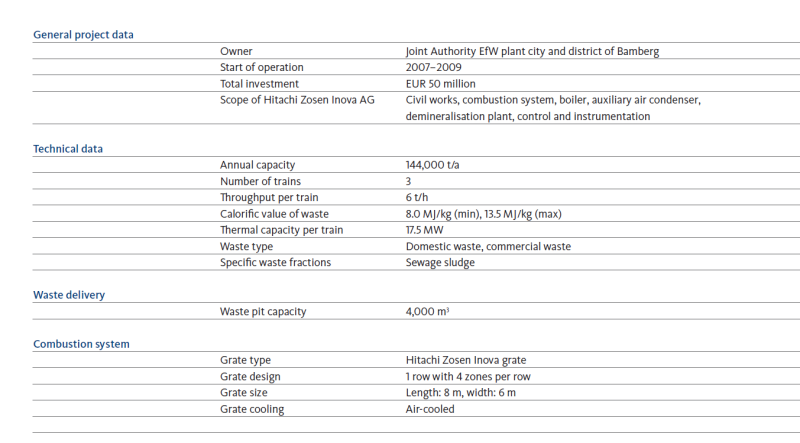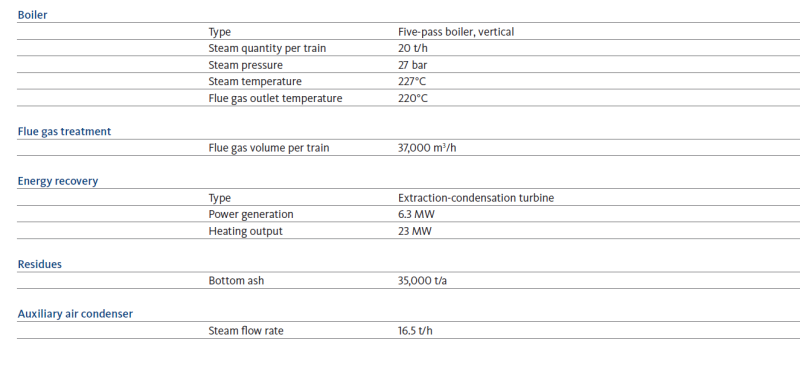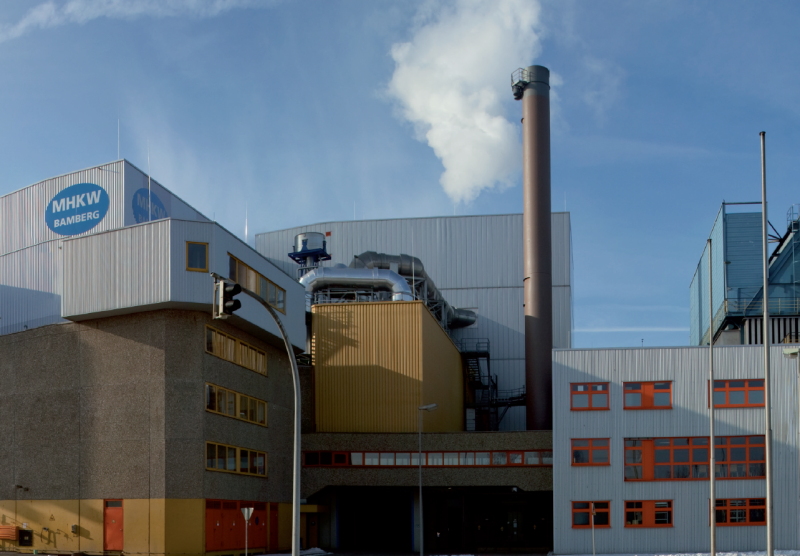Bamberg / Germany
Bamberg / Germany
Bamberg Waste to Energy plant – Efficiency enhancement, maximised energy recovery, and improved cost-effectiveness after modernisation
The Bamberg Waste to Energy plant has been operating for more than 30 years. Now that its incineration trains have been modernised, it ranks among Germany’s most advanced waste treatment facilities.
With its three process trains, the Bamberg Waste to Energy plant assures the safe treatment of residual waste from the Franconian cities and districts of Bamberg, Forchheim, Erlangen, and Erlangen-Höchstadt. With a capacity of up to 6.6 tons per hour per train, it ecologically and cost-effectively treats some 144,000 tons of household, commercial, and bulk waste as well as dewatered sewage sludge per year. The sewage sludge, roughly 126,000 m3/a with 3% dry residue content (about 30% dry residue after dewatering), is scattered into the waste pit, mixed with the other waste, and subjected to thermal treatment.
With the declared objectives of matching the plant’s capacity to current needs and of optimising energy recovery, the Joint Authority that operates the Bamberg Waste to Energy facility commissioned Kanadevia Inova to totally overhaul the three incineration trains. The project also included interfaces to the existing flue gas treatment and energy recovery subsystems.
One of the major requirements imposed on Kanadevia Inova by the Joint Authority was to secure the continued operation of two plant trains at all times so that reliable waste treatment would never be interrupted. The modifications were performed in three stages during the summer months from 2007 to 2009. The contract included the dismantling of the old trains, the installation of new combustion systems, and the start-up phase for each train. The tight schedule of this clearly defined project posed considerable challenges to Kanadevia Inova in terms of logistics, organisation, and teamwork.
Subsequent to the smooth implementation of the modernisation project, the plant now delivers 23 MW of thermal energy distributed to the heating systems of 64 clients with 83 distribution stations via the facility’s own district heat network. It also generates about 6.3 MW of electrical energy, which is used to cover the station’s local power requirements; the surplus electricity is fed into the city’s power grid.
An efficiency enhancement that pays off
With a prospective service life of 40 to 50 years, the modernisation of an existing plant pays for itself with the resulting efficiency gains. This applies to Bamberg as well. The Joint Authority now has one of the most advanced and at the same time one of the most efficient combustion systems in Germany.
Total burnout assured
Via the cooled feed hoppers, the presorted waste is fed from the pit to one of the identical process trains. The waste is accurately metered by the ram feeder onto the four-row Kanadevia Inova grate, which is inclined by 18°. Precise metering and controlled primary air injection guarantee full waste burnout. The primary air is aspirated from the waste pit and injected into the windboxes beneath the individual grate zones by fans. Five-pass corner-tube boiler The Bamberg Waste to Energy plant is one of the few facilities that is equipped with a five-pass cornertube stream generator. It is downstream of the combustion system and constitutes a process entity together with the cooled combustion chamber positioned over the grate. The five passes of the boiler are configured as follows: The 1st boiler pass is a secondary combustion chamber that assures maximized burnout of flue gases. The 2nd boiler pass incorporates the evaporation plates. The 3rd and 4th boiler passes have superheater harps, and the 5th boiler pass accommodates the economizer bundles.
After the boiler, the flue gases are routed to the scrubber. This section, which consists of an electrostatic precipitator, a two-stage downstream scrubber and the flue gas reheater, was already overhauled in 1990 and complies with current standards.
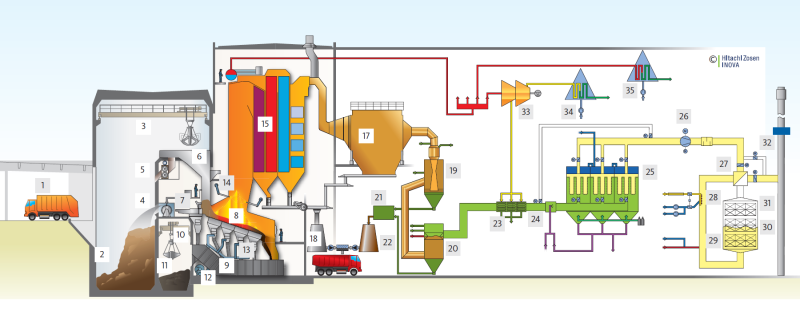
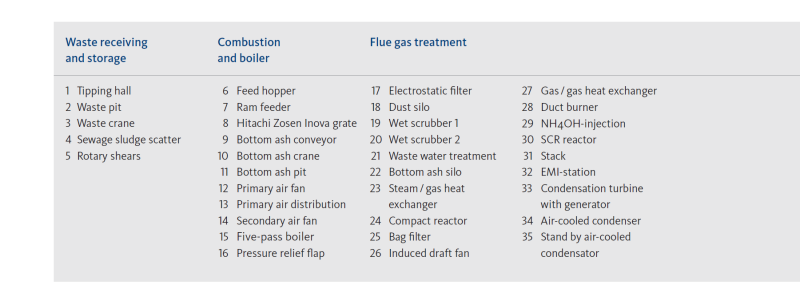
Combustion capacity control
The combustion capacity controller (CCC) is an important component of the combustion system; it supports the largely automated and dependable operation of the plant under different load conditions. The CCC makes it possible to rapidly adjust the temperature distribution on the grate and in the secondary combustion chamber to the profiles needed in response to changing waste compositions. This assures optimised gas and bottom ash burnout while safeguarding compliance with legislation regarding combustion chamber temperatures, oxygen concentrations in the flue gas, and other operating parameters.
The assignment from A to Z
In addition to the plant sections described above, the overall contract covered all plant components associated with the combustion system, including start-up and support burners, hydraulics for the grate and ram feeders, the platform bottom ash conveyors, bottom ash removal, and the demineralisation plant. The increased capacity of the boilers called for an additional auxiliary condenser to make sure that the excess steam produced during the summer months can be condensed.
In the winter months, the steam is used to generate district heating. The auxiliary air condenser was installed concurrently with boiler train two. The scope of delivery also encompassed all necessary civil works, such as the vertical enlargement of the boiler building by 6 meters, including the foundation and the installation of a new elevator. This part of the project also required extensive structural rehabilitation measures.
Interface to the existing process control system
To assure consistent user guidance, the legacy prcess control system was upgraded and integrated into the new combustion capacity control concept. These measures were implemented during ongoing operation, so strict coordination was essential.
